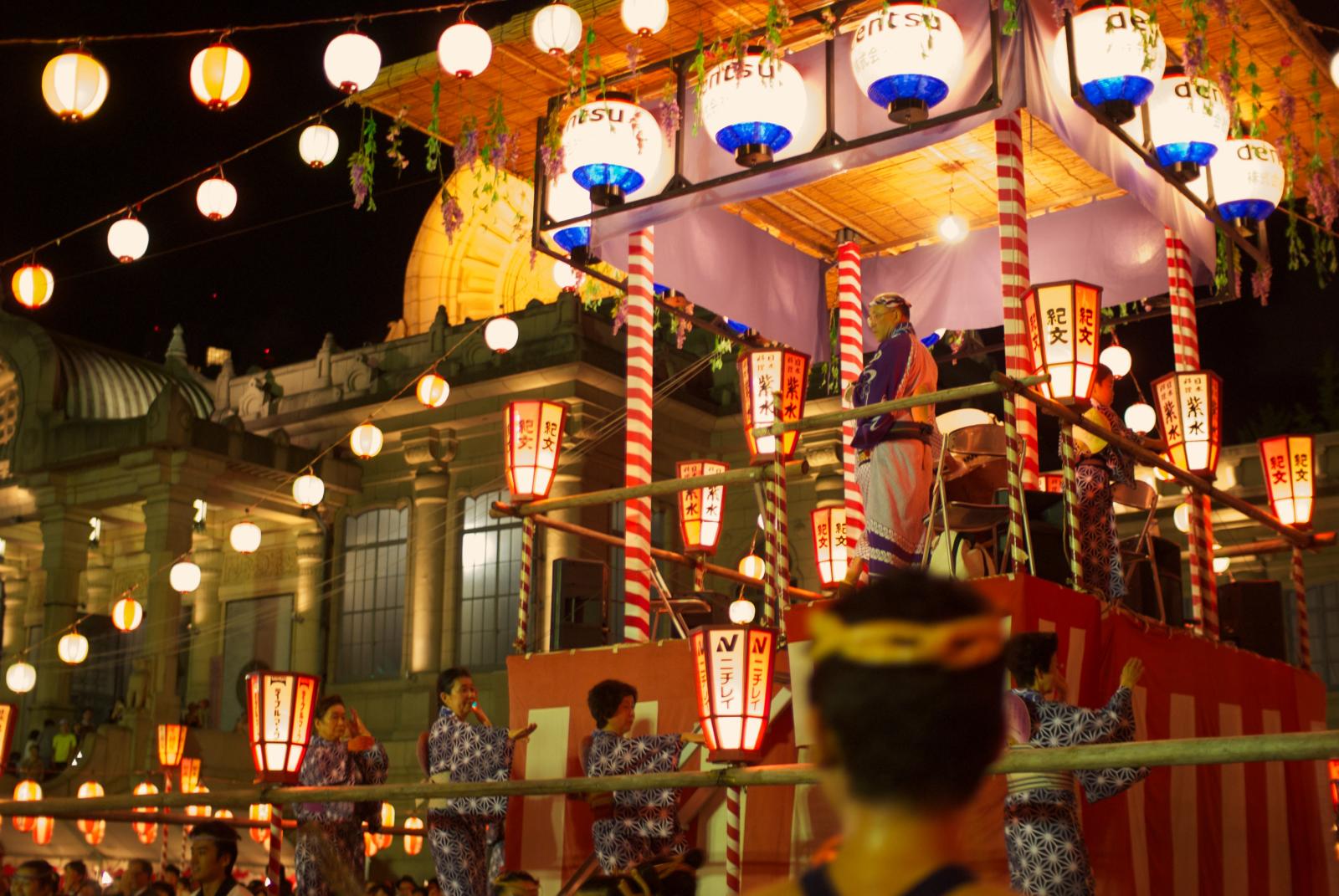Each summer, Japan marks one of its most significant events—Obon (お盆)—a time to honor ancestors and enjoy festive gatherings. From incense-filled altars and heartfelt reunions to bon odori dances, lantern-lit ceremonies, and regional rituals, Obon offers both solemn remembrance and spirited celebration.
What Is Obon?
Obon is a Buddhist tradition that honors the return of ancestral spirits, believed to visit their families during this period. Its origins trace back over 500 years and are rooted in a Buddhist legend involving Mokuren, a disciple of Buddha, who revived his mother’s spirit through offerings, inspiring the joyous dance rituals now known as Bon Odori (盆踊り).
While Obon centers on remembrance, it is characterized by warmth rather than sorrow. Families tidy their homes, clean grave sites, and prepare altars (shōryōdana, 精霊棚) with flowers, incense, fruits, and symbolic “spirit horses” (shōryō-uma)—a cucumber horse for swift arrival and an eggplant cow for gentle departure.
Honoring Spirits: Customs & Rituals
Mukaebi (迎え火) & Okuribi (送り火):
- On Day 1 (often August 13), families light welcoming fires (mukaebi) or hang lanterns to guide ancestral spirits home.
- On the final day (commonly August 16), farewell fires (okuribi) or tōrō nagashi (“floating lanterns”) send them back to the afterlife. Notably, Kyoto’s Gozan no Okuribi (五山送り火) features giant bonfires on mountain slopes shaped like kanji characters, visible across the city at dusk.
Grave Visits (お墓参り):
Obon is also a time for families to return to ancestral hometowns, clean graves, offer incense, water, and seasonal foods, and share memories—strengthening family ties across generations.
Bon Odori & Festival Celebrations
Bon Odori (盆踊り) is the joyful dance that brings community and spirits together. Held in temple courtyards, parks, or town squares, people of all ages dressed in yukata (浴衣) dance in circles around a yagura platform to the rhythm of taiko drums and local music. Regional dances differ, often reflecting local occupations or folklore—and visitors are warmly invited to join in.
At many Obon events, communities erect food stalls (屋台) offering street food like takoyaki, yakitori, kakigōri, and more, blending solemn ritual with summer festival atmosphere.
Famous Obon Festivals and Events
Here are a few of Japan’s standout Obon celebrations:
- Awa Odori (Tokushima, August 12–15): Japan’s biggest dance festival, where thousands perform choreographed dances through city streets to traditional instruments—including shamisen and taiko drums—attracting over one million visitors.
- Gujo Odori (Gujō, Gifu): More than 30 nights of dancing, with marathon dance sessions during Obon nights running until dawn. Spectators are welcome to jump in, as locals chant and drum together in shared circles of tradition.
- Gozan no Okuribi (Kyoto, August 16): Massive bonfires shaped like kanji and symbols are lit on five mountains, marking the spiritual farewell of ancestors—a breathtaking spectacle at twilight.
- Toro Nagashi (floating lanterns) in Tokyo (Sumida River) or Nagasaki: Lanterns carry messages and names of loved ones across water, creating an ethereal visual farewell ceremony at dusk.
When Is Obon?
- Most of Japan observes Obon from August 13–16 (kō bon), but metropolitan regions like Tokyo and parts of Tōhoku often follow mid-July (July 13–16) (kyū bon). Some islands like Okinawa follow the lunar calendar, resulting in celebrations in late August or September.
Travel Advisory:
Obon is one of Japan’s busiest holiday periods. Bullet trains, highways, and mix of public transport fill quickly, and many local businesses close as people return home. Early planning is essential for travel and lodging during this time.
Tips for Visiting Obon as a Traveler
- Plan ahead: Book trains and hotels early—peak Obon can be extremely crowded.
- Bring cash: Local offerings, street food, and shrine donations often require coins or small bills.
- Dress for the heat: Lightweight cotton clothing or yukata is common.
- Respect customs: When joining Bon Odori, follow the group and be friendly. Offerings, fires, and tours are considered sacred acts—participate with reverence.
- Watch cues: Lantern ceremonies and bonfires often start between 7 p.m. and 8 p.m., depending on region.
Why Experience Obon?
Obon is not just a festival—it’s a cultural bridge connecting past and present, life and memory. Through rituals of cleaning, offering, dancing, and lantern-lighting, you witness Japan’s deep respect for ancestors and community spirit. From joyous circle dances to quiet floating lanterns on the water, the festival invites you to reflect—not mourn—to participate, and to feel the warmth of tradition.

